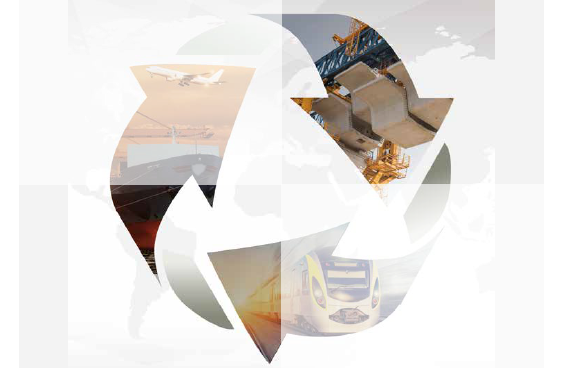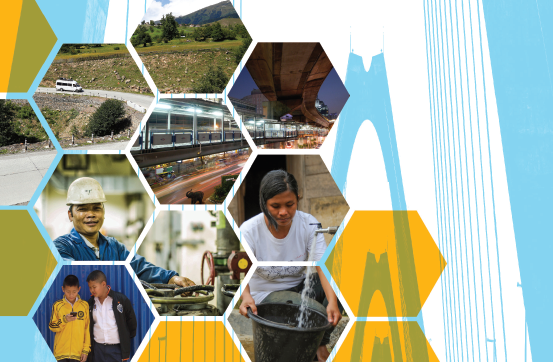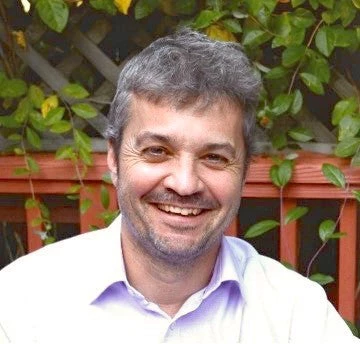Photo: ispyfriend / iStock
It seems like every week there are new reports being published about public-private partnerships (PPPs) by different organizations around the world. How can you keep track of what’s new and what’s relevant for your work?
With over 4,000 documents on PPPs in seven different languages (English, Spanish, French, Portuguese, Arabic, Russian, and Chinese) in its searchable document library, the PPP Knowledge Lab has become a key resource for the PPP community to keep up to date with the latest on PPPs.
What’s been trending over the last quarter on the PPP Knowledge Lab?
1. Moving from “billions to trillions” and hitting the SDG targets
To meet the investment needs of the Sustainable Development Goals (SDGs), “ the global community needs to move the discussion from ‘Billions’ in ODA to ‘Trillions' in investments of all kinds: public and private, national and global, in both capital and capacity.” PPPs can play an important role in mobilizing additional forms of financing and closing the infrastructure gap. Recognizing that, multiple organizations have published reports in the last quarter looking at innovative ways to mobilize private investment and how to embed the SDG targets into PPP projects and operations .
 Mobilizing Islamic Finance for Public-Private Partnerships, a joint report of the World Bank and Islamic Development Bank Group (IsDB), financed by the Public-Private Infrastructure Advisory Facility (PPIAF), analyzes how Islamic finance has been applied in infrastructure PPP projects, what the structural challenges and solutions are, and what can be done to deepen and broaden the use of Islamic finance for infrastructure. It also looks at how growth of the Islamic financial sector can contribute to the achievement of the SDGs.
Mobilizing Islamic Finance for Public-Private Partnerships, a joint report of the World Bank and Islamic Development Bank Group (IsDB), financed by the Public-Private Infrastructure Advisory Facility (PPIAF), analyzes how Islamic finance has been applied in infrastructure PPP projects, what the structural challenges and solutions are, and what can be done to deepen and broaden the use of Islamic finance for infrastructure. It also looks at how growth of the Islamic financial sector can contribute to the achievement of the SDGs.
 Recycling our Infrastructure for Future Generations, published by the World Economic Forum (WEF), takes a closer look at an emerging approach to financing new infrastructure, which is known as “Asset Recycling.” Asset Recycling is a process which recycles previous taxpayers' funds that have been locked up in older assets to pay for new or renewed assets. This report looks at the potential of asset recycling to significantly increase levels of private investment in infrastructure and help close the financing gap.
Recycling our Infrastructure for Future Generations, published by the World Economic Forum (WEF), takes a closer look at an emerging approach to financing new infrastructure, which is known as “Asset Recycling.” Asset Recycling is a process which recycles previous taxpayers' funds that have been locked up in older assets to pay for new or renewed assets. This report looks at the potential of asset recycling to significantly increase levels of private investment in infrastructure and help close the financing gap.
 Guidance on
PPPs for Sustainable Development, recently published by the United Nations Economic and Social Commission for Asia and the Pacific (ESCAP), looks at how developing countries in Asia and the Pacific can work towards achieving the SDGs by strengthening the delivery of public infrastructure and services. The report provides explicit guidance on how to incorporate the SDGs into PPP programs and projects to ensure that a country’s PPPs contribute optimally to meeting the SDGs.
Guidance on
PPPs for Sustainable Development, recently published by the United Nations Economic and Social Commission for Asia and the Pacific (ESCAP), looks at how developing countries in Asia and the Pacific can work towards achieving the SDGs by strengthening the delivery of public infrastructure and services. The report provides explicit guidance on how to incorporate the SDGs into PPP programs and projects to ensure that a country’s PPPs contribute optimally to meeting the SDGs.
2. Improving infrastructure governance
Another trend we have seen emerge is organizations working towards better governance in infrastructure and in the process of identifying and developing PPP projects. This was reflected in the development of policy guidelines for managing unsolicited proposals in infrastructure projects and a multi-stakeholder series of events aimed at creating a dialogue around infrastructure governance.
 When it comes to infrastructure projects, “unsolicited proposals” (USPs) represent an alternative to the traditional project initiation method where the private sector, rather than the government, takes the leading role in identifying and developing a project. To ensure governments can mobilize the strengths of the private sector while protecting the public interest, USPs, when accepted, need to be carefully managed with regards to good governance and ensuring value for money.
The Policy Guidelines for Managing Unsolicited Proposals, developed by the World Bank with funding from PPIAF, provides key policy considerations for USPs and an in-depth-review of global best practices with USP policies and projects.
When it comes to infrastructure projects, “unsolicited proposals” (USPs) represent an alternative to the traditional project initiation method where the private sector, rather than the government, takes the leading role in identifying and developing a project. To ensure governments can mobilize the strengths of the private sector while protecting the public interest, USPs, when accepted, need to be carefully managed with regards to good governance and ensuring value for money.
The Policy Guidelines for Managing Unsolicited Proposals, developed by the World Bank with funding from PPIAF, provides key policy considerations for USPs and an in-depth-review of global best practices with USP policies and projects.
 The
Regional Roundtables on Infrastructure Governance program brings together government officials, the private sector, civil society and practitioners to create better approaches, standards, and tools that will improve infrastructure governance around the world. The first regional roundtable took place on November 2017 in South Africa and brought together high-level decision-makers to set a direction for how Africa can boost its infrastructure pipeline through better governance.
The
Regional Roundtables on Infrastructure Governance program brings together government officials, the private sector, civil society and practitioners to create better approaches, standards, and tools that will improve infrastructure governance around the world. The first regional roundtable took place on November 2017 in South Africa and brought together high-level decision-makers to set a direction for how Africa can boost its infrastructure pipeline through better governance.
Stay tuned for information on the second regional roundtable planned for June 2018 in Abidjan, Côte d'Ivoire.
3. Building tools for public policy officials
Where can you find up to date information about a country’s PPP business environment? And should a certain project be implemented as a PPP? How do you decide? In the last quarter, we’ve seen multiple organizations develop tools to help public policy officials and the private sector make more informed decisions on PPPs and standardize the process of applying best practices.
 The Asian Development Bank’s (ADB)
PPP Monitor tracks the development of the PPP business environment and the challenges of doing PPPs in nine countries: Bangladesh, the People’s Republic of China, India, Indonesia, Kazakhstan, Papua New Guinea, the Philippines, Thailand and Viet Nam. It offers a comprehensive tool for public sector policy makers to monitor and improve the enabling environment for private sector participation in infrastructure projects and serves as an active platform for dialogue between the public and private sectors.
The Asian Development Bank’s (ADB)
PPP Monitor tracks the development of the PPP business environment and the challenges of doing PPPs in nine countries: Bangladesh, the People’s Republic of China, India, Indonesia, Kazakhstan, Papua New Guinea, the Philippines, Thailand and Viet Nam. It offers a comprehensive tool for public sector policy makers to monitor and improve the enabling environment for private sector participation in infrastructure projects and serves as an active platform for dialogue between the public and private sectors.
 The
PPP Screening Tool, recently published by the World Bank’s Infrastructure, PPPs and Guarantees Group, provides a preliminary screening of projects to determine whether they are suited to be developed as PPPs. The tool analyzes a variety of factors including fiscal affordability, institutional capacity and strategic suitability in making this assessment, identifies potential deal breakers and provides a final project score.
The
PPP Screening Tool, recently published by the World Bank’s Infrastructure, PPPs and Guarantees Group, provides a preliminary screening of projects to determine whether they are suited to be developed as PPPs. The tool analyzes a variety of factors including fiscal affordability, institutional capacity and strategic suitability in making this assessment, identifies potential deal breakers and provides a final project score.
Access all these resources and stay informed on recent trends in the PPP community by visiting the PPP Knowledge Lab at https://pppknowledgelab.org.
The PPP Knowledge Lab is a one-stop shop for information on PPPs, created with funding from the Public-Private Infrastructure Advisory Facility (PPIAF), and in collaboration with the African Development Bank (AfDB), Asian Development Bank (ADB), European Bank for Reconstruction and Development (EBRD), European Investment Bank (EIB), Global Partnership on Output-Based Aid (GPOBA), Inter-American Development Bank (IDB), Islamic Development Bank (IsDB) Group, Multilateral Investment Fund, Organisation for Economic Co-operation and Development (OECD), ESCAP, United Nations Economic Commission for Europe (UNECE), World Economic Forum (WEF), Global Infrastructure Hub (GIH ), and the World Bank Group. It aims to collect and feature new resources on PPPs from the world’s top multilateral development banks and international organizations and make them more easily accessible to PPP practitioners.
Related Posts:
Multilateral development banks collaborate to improve public-private partnerships: the PPP Knowledge Lab
What’s new on the PPP Knowledge Lab?




Join the Conversation